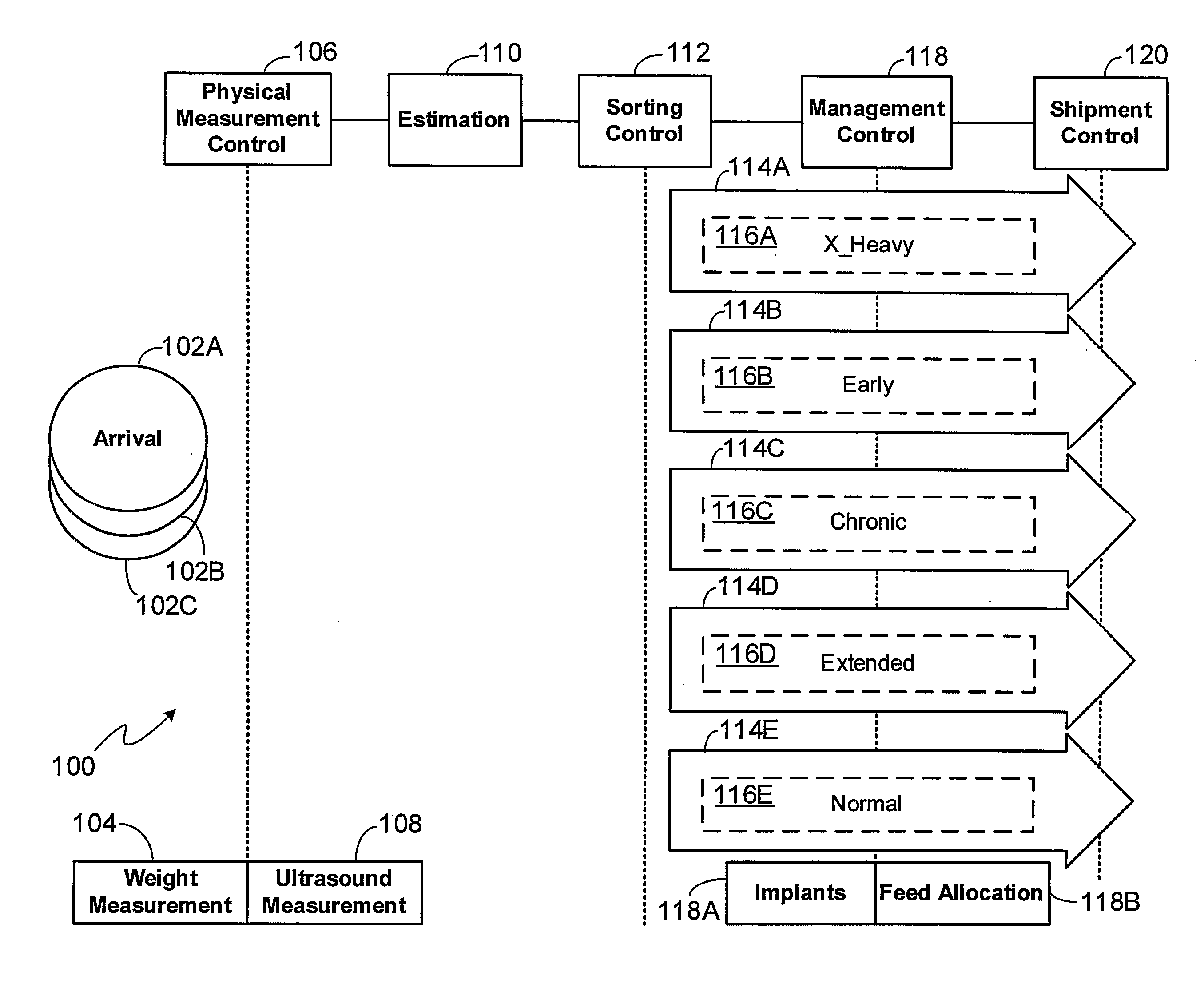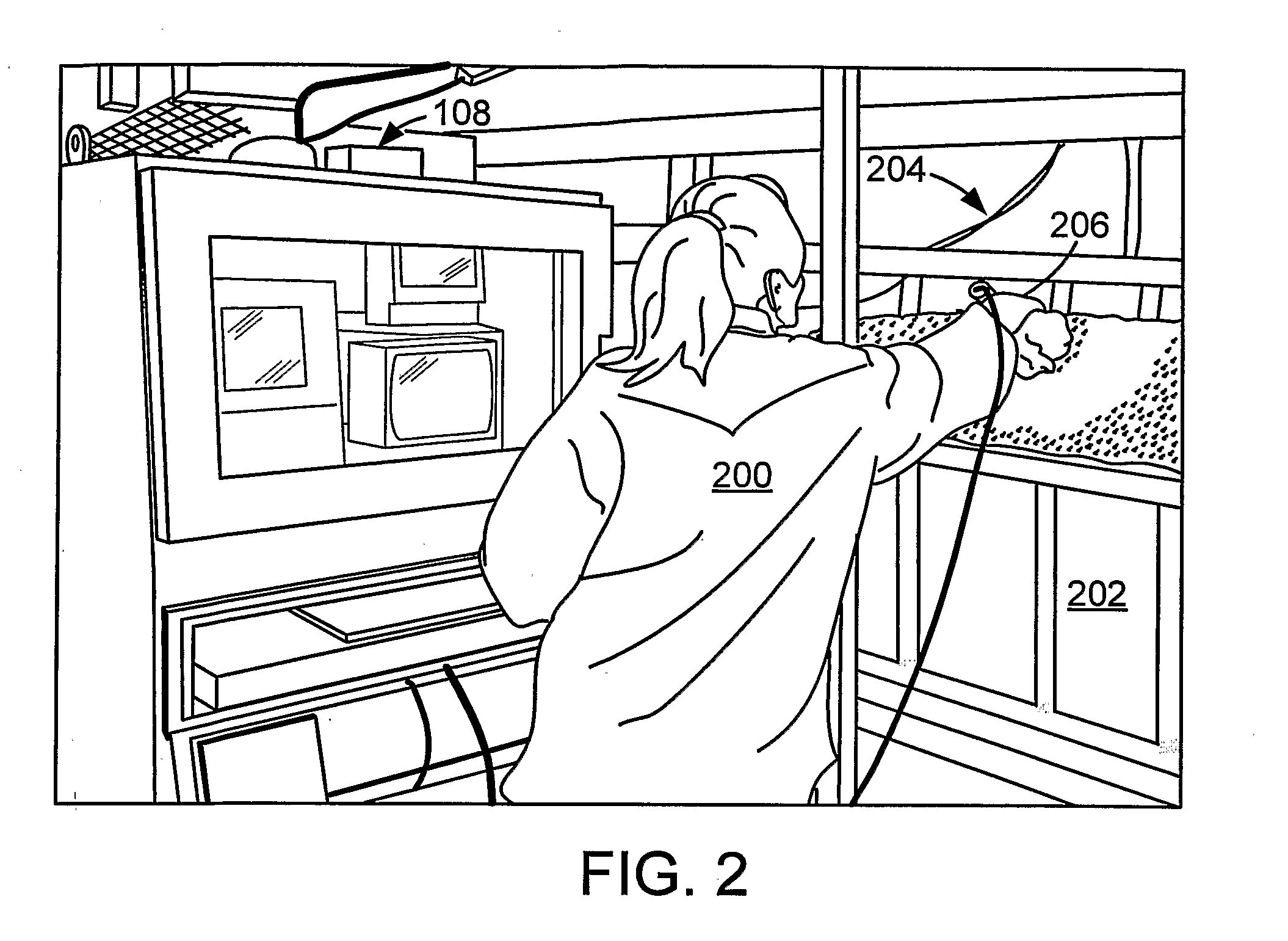Animal Management System
a management system and cattle technology, applied in the field of animal management system, can solve the problems of significant price discounts and price premiums, and achieve the effects of minimizing excess fatness, improving uniformity of carcass weight, and optimizing marbling potential
- Summary
- Abstract
- Description
- Claims
- Application Information
AI Technical Summary
Benefits of technology
Problems solved by technology
Method used
Image
Examples
Embodiment Construction
[0019]FIG. 1 shows a system 100 for managing animals at a feedlot. The system 100 uses weight and ultrasound information to make sorting decisions, commingles cattle at the time of sorting and allocates feed provided to a pen to individual animals within the pen. In general, the system 100 uses a combination of weight and ultrasound measurements of the live animal to predict future weight and body composition so that both factors can be accounted for in sorting and harvest date decisions according to a preferred embodiment.
[0020]Animals are brought to a feedlot with the expectation that they will later be shipped from the feedlot to a beef packing plant for slaughter. The exact length of time that each animal will spend at the feedlot has typically not been determined when the animal arrives. Rather, the specific shipping date will be determined while they are at the feedlot as will be described below.
[0021]Animals arrive at the feedlot in one or more arrival groups 102. The groups ...
PUM
 Login to View More
Login to View More Abstract
Description
Claims
Application Information
 Login to View More
Login to View More - R&D
- Intellectual Property
- Life Sciences
- Materials
- Tech Scout
- Unparalleled Data Quality
- Higher Quality Content
- 60% Fewer Hallucinations
Browse by: Latest US Patents, China's latest patents, Technical Efficacy Thesaurus, Application Domain, Technology Topic, Popular Technical Reports.
© 2025 PatSnap. All rights reserved.Legal|Privacy policy|Modern Slavery Act Transparency Statement|Sitemap|About US| Contact US: help@patsnap.com



